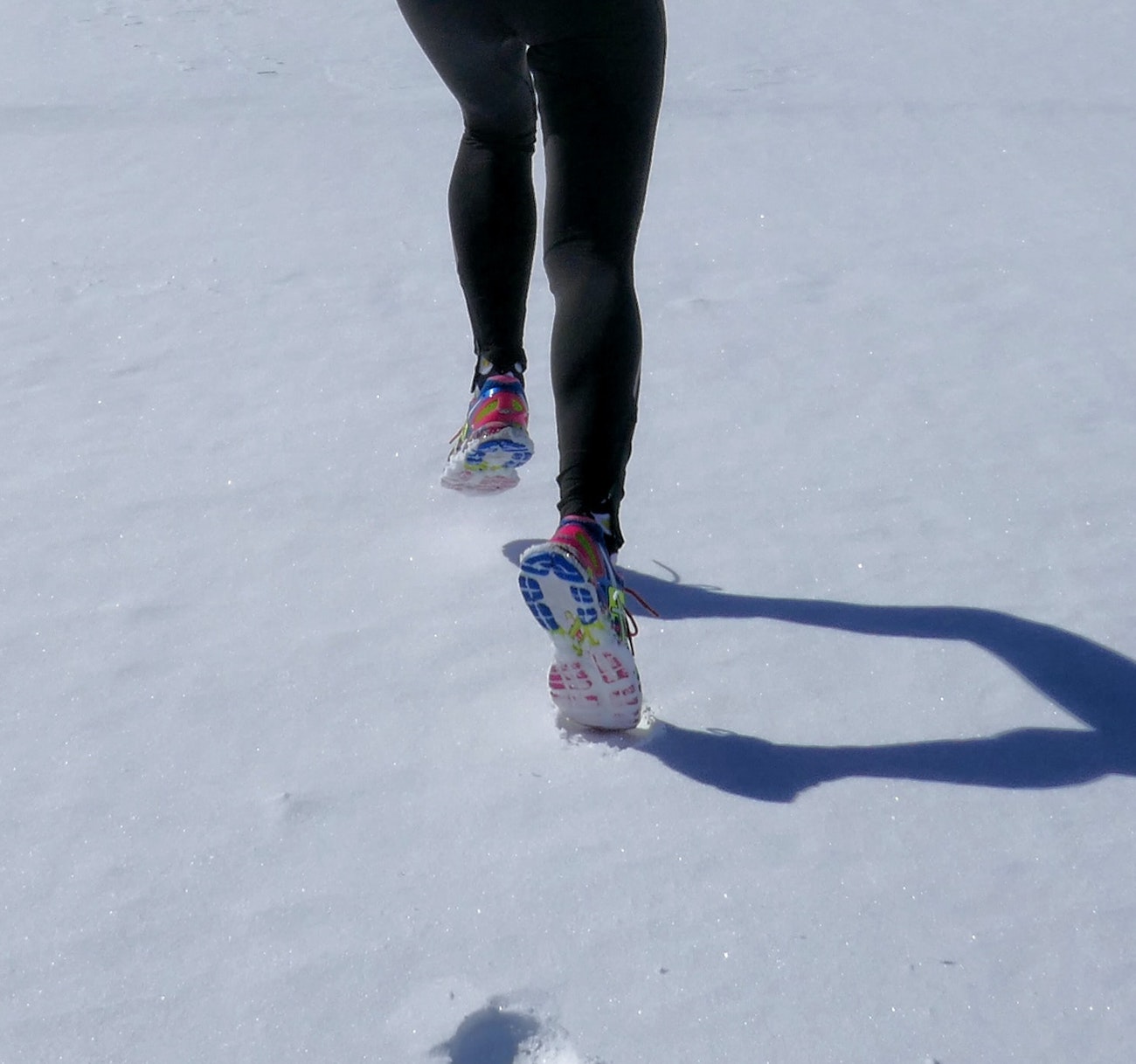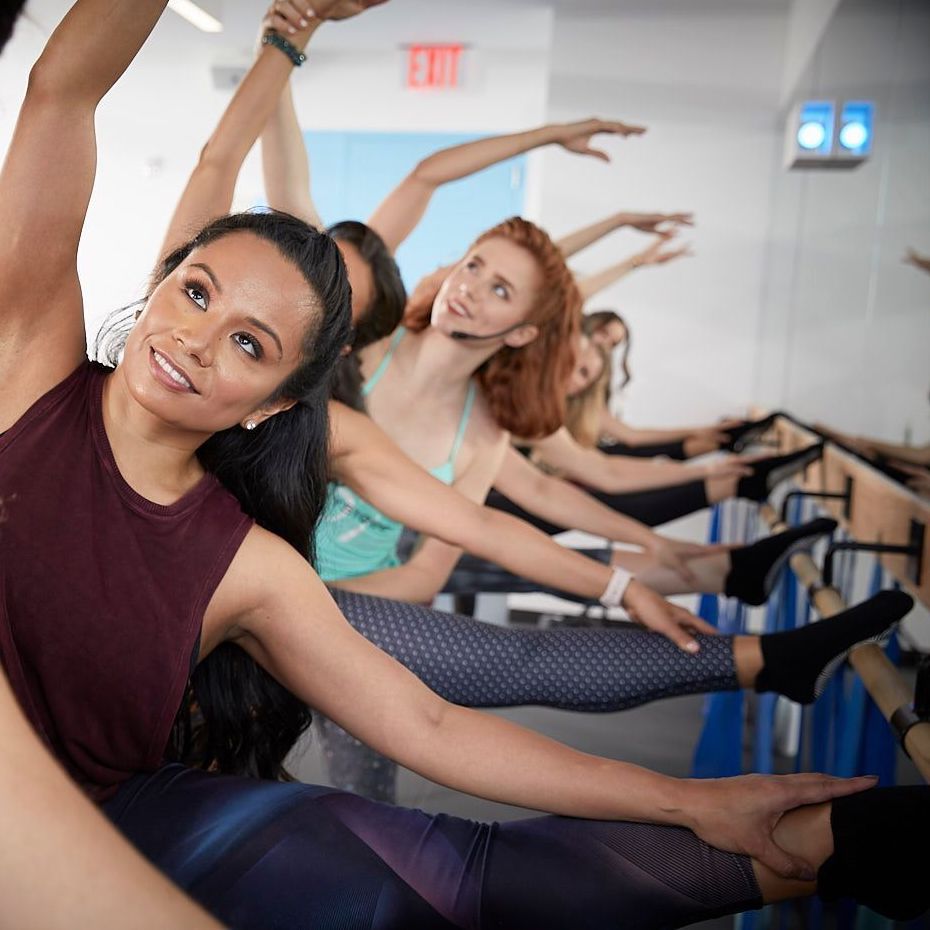Congratulations on making yourself a priority and committing to a regular workout routine. The addition of physical fitness to your life requires hard work but yields great rewards. Now, which method should you choose? With the vast choice of fitness workout options available today, knowing which one is right for you can be overwhelming.
Barre vs Pilates vs Yoga
Barre, pilates, and yoga provide an effective workout from which you will see positive physical results. All will help to sculpt and tone your muscles and improve your overall health. Maybe you want to increase your flexibility or cardiovascular endurance, or perhaps you want to tone your muscles without bulking up, or you’re favoring a past or present injury. Maybe you want to improve your core strength and posture. An awareness of your present fitness levels and future goals can help you decide which workout method will benefit you the most.

All workout programs require a fair amount of commitment in order to achieve maximum results, so factors such as the duration, frequency, location, and types of classes available may help you decide which one is a good fit for you. Your level of commitment to any fitness program hinges greatly upon your level of enjoyment with the exercise methods employed. Although any amount of physical activity is positive, the more you exercise, the better the results you will see.
With today’s demanding lifestyles, many individuals find it difficult to stick with a regular exercise program. The most common barriers to regular physical activity include a lack of time and motivation. Other reported challenges include fear of injury, feelings of self-consciousness or not being athletic enough, and memories of perceived failure with prior exercise programs. Fortunately, many fitness studios offer free trials, flexible class times, and even downloadable or streamed classes, so it’s easier than ever to commit.
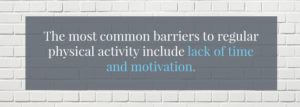
The fitness program you ultimately choose is a personal choice and depends upon many factors. Whether it’s yoga, Pilates, or barre, knowing the basic methodology of each workout option, along with benefits, similarities, and differences, can help you decide which one is a good fit for you.
Pilates
Pilates was created by Joseph Pilates in Germany during World War I. What started as a rehab method for injured soldiers eventually grew into a full-body training system used by dancers, athletes, police officers—you name it. At its core, Pilates connects the mind and body, helping people build strength, recover from injury, and move better in everyday life.
Most classes run for 45 minutes to an hour. All you really need is a mat, a water bottle, a towel, and comfy clothes. Some sessions use extra gear like balls, straps, or reformers, especially in studio settings—but you can also invest in your own if you’re doing Pilates at home. Like yoga, you’ll typically be barefoot.
Classes involve a series of controlled movements and poses that require deep focus. The goal? Engage your muscles with precision and control. Modifications are common, so you can move at your own pace and skill level without feeling out of place.
Pilates relies on your body weight for resistance and activates both small stabilizing muscles and larger muscle groups. With consistent practice—say, three times a week—you’ll start to feel (and see) a difference in your core strength, flexibility, and overall tone. And while it’s not cardio, it pairs well with walks, runs, or other aerobic activities to round out your routine. Don’t be fooled by the slow pace—Pilates delivers a serious, full-body challenge.

What You Get Out of Pilates
Physically, Pilates helps you build strength and tone without bulking up. It targets deep core muscles, which helps flatten and firm your abs. It also improves posture and flexibility, which can reduce the risk of injury and ease chronic back pain.
Mentally, Pilates sharpens focus. Coordinating your breath with your movement requires serious attention. Joseph Pilates even called it “the thinking man’s exercise” because of the boost it gives your brain. A clearer mind, less stress, better health—it all ties together.
Who Can Benefit from Pilates?
Pilates works for all fitness levels. It’s a smart starting point if you’re new to working out or returning after an injury. It’s also a solid option for pregnant or postpartum women (with your doctor’s go-ahead, of course).
Barre Workouts
Barre is a fitness favorite that blends ballet-inspired moves with yoga and Pilates. It’s graceful, yes—but don’t be fooled. It’s also a serious workout. The method traces back to the Lotte Berk Method, created in 1959 by a German dancer recovering from a back injury. What started as rehab has evolved into a full-body burn that people can’t get enough of.
Classes use a ballet barre and a mat, and sometimes small props like resistance balls or light weights. No dance background needed—just a willingness to move, sweat, and challenge your muscles. Barre is welcoming to all fitness levels and focuses on control, alignment, and building strength from the inside out.
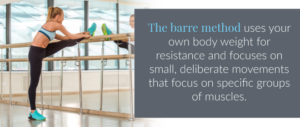
You’ll use your own body weight as resistance and work through small, targeted movements designed to hit muscles you didn’t even know you had. You’ll push them to fatigue, then stretch them out. It’s all about form, posture, and precision, which is why your core gets stronger and your body starts to look longer, leaner, and more aligned.
Many barre classes also mix in bursts of cardio to raise your heart rate, boost metabolism, and keep fat burning long after class ends. Expect to keep moving, with very little rest between sets—classes usually last about 60 minutes and pack a punch.
Why People Love Barre
First off, it’s fun. Think upbeat music, engaging routines, and that satisfying burn that tells you your muscles are doing the work. When workouts are enjoyable, you’re more likely to stick with them, and barre makes it easy to keep coming back.
Beyond the tone and definition, regular barre classes improve posture, increase endurance, and help build bone density (which is a big win for long-term health). And because the movements are low-impact and joint-friendly, barre is kind to your body, even while it’s making you stronger.
Mentally, barre clears your head. Like yoga and Pilates, it calls for total focus. Concentrating on form and breath helps quiet the noise in your mind, lowers stress, and leaves you feeling more centered. And of course, those endorphins don’t hurt.
If you love the mindfulness of yoga but want to turn up the core intensity, Pilates might be your thing. It delivers a full-body workout, challenges your strength and focus, and is gentle on your joints. High impact? No. High reward? Absolutely.
Who Benefits from Barre?
If you’re looking to build strength, improve posture, and work your entire body in every session, barre is a solid pick. It’s especially great if you sit for long stretches or feel stiff from desk work. The small, controlled movements target the muscles that often get overlooked, which makes for a powerful (and usually sore!) post-workout feeling.
Barre suits all fitness levels. Whether you’ve danced before or have two left feet, the structure and energy of a barre class will meet you where you are. It’s intense but low-impact, focused but fun, and the results speak for themselves.
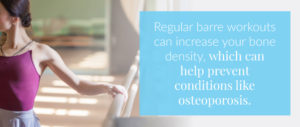
Barre vs. Pilates
It’s a common question: what’s the difference between barre and Pilates? They both involve precise movements, a focus on core strength, and minimal impact on the joints. So is barre like Pilates? In some ways—yes. But once you get into the flow of each, you’ll feel the difference pretty quickly.
Pilates is all about control and alignment. Most Pilates workouts take place on a mat, sometimes using props like rings, balls, or resistance bands. Movements are slower and highly focused on building core strength, improving posture, and increasing flexibility. It’s often used for injury prevention and rehab, but it’s just as effective for building long-term strength and stability.
Barre, meanwhile, cranks up the energy. Inspired by ballet but rooted in strength training, a Pilates barre workout blends small, isometric movements with music, repetition, and a little cardio. You’ll use a ballet barre (or anything sturdy) for balance as you pulse, hold, and stretch your way through class. Expect to feel the burn, especially in your legs, glutes, and arms.
Pilates is slower-paced, deeply focused, and great for dialing into your breath and body mechanics.
Barre workouts are more dynamic, with upbeat movement patterns that challenge your endurance and sculpt muscles with high reps.
If you’re looking for a thoughtful, core-driven practice with a calm intensity, Pilates is a solid go-to. If you want a fun, music-fueled full-body burn that leaves you shaking in the best way, barre brings the fire.
Both barre and Pilates use body weight, light resistance, and small props to work the full body with low-impact, joint-friendly movements. They share exercises like lunges and planks, emphasize isometric holds to build strength and endurance, and improve posture, stability, and mobility. Ultimately, both are highly effective for lengthening, strengthening, and increasing range of motion.
Try both and switch it up. Your body will benefit either way. Not sure? Physique 57 has both!
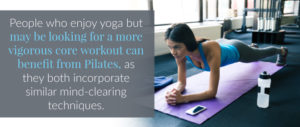
Yoga
Yoga, which when translated from Sanskrit means “to control” or “to unite,” is said to have originated in India thousands of years ago. While its origins are based upon religion, many yoga classes today focus more on the connection between mind, body, and spirit and achieving a balance within the body. Yoga concentrates heavily on body awareness, breathing, and stretching.
A typical yoga class involves different types of breathing and stretching exercises. You will need a yoga mat on which you will spend the majority of your workout. A series of warm-up exercises involving breathing and stretching usually begins the class. From there, you will engage in a variety of yoga positions designed to stretch and work your muscles. This involves holding your body in challenging poses designed to work a variety of muscle groups at the same time. A cool-down period with breathing exercises will end your session.
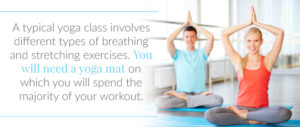
Most studios offer yoga mats for your use, but you should purchase a fitness mat if working out at home. You’ll also need comfortable clothing, as you flow your body into a variety of positions. You will most likely be barefoot, so purchasing specific footwear is not usually necessary. Other items, such as exercise bands and blocks can accompany yoga routines, but they may not be necessary right away or even at all. A water bottle and a towel will help you to stay hydrated and comfortable during your class. You will be bending and stretching, so it’s best to avoid heavy meals a few hours before your class.
Flexibility is a factor in yoga, but it is not necessary for beginner classes. Continued practice over time will increase your agility and flexibility. You can see positive results over time even if you only attend an hour a week, but attending classes around 2-3 times per week will help you experience the most benefits. Yoga classes usually last around an hour from warm-up to cool-down.
Yoga Benefits
Yoga offers numerous benefits. Physical benefits include increased flexibility, muscle strength and tone. Regular yoga practice can decrease stiffness and joint pain and improve posture and coordination. It can also prevent you from suffering future muscle injuries. While not a high-impact method of working out, yoga is physically intense.

Yoga also offers many mental benefits, such as a reduction in stress levels. Greater relaxation and reduced stress lead to a host of other positive body changes, including an improvement in circulation, sleep, and self-confidence. A positive mental outlook also helps to maintain a healthy immune system, which in turn can ward off other serious ailments such as high cholesterol, heart disease, and stroke.
Who May Benefit Most From Yoga?
Yoga is appropriate for individuals of all ages and fitness levels. Those who are seeking a workout that increases their mind, body, and spiritual awareness will find yoga to be a good fit for them. Those who wish to increase their fitness level at a slower pace may find that yoga is perfect for them, although the physical intensity is just as high as in many other exercise methods. Yoga exercises utilize a variety of muscle groups at the same time, so an entire body workout is often achieved during each class. Yoga is effective in toning muscles without creating a bulky look.
Pregnant women may find yoga to be a beneficial workout, but you should always consult your physician before engaging in any exercise program, especially during pregnancy. Individuals who want a more relaxing form of exercise while improving upon their current level of fitness will find yoga to be enjoyable. Many people benefit from the clear-headedness that comes with the deep breathing and mind-calming exercises that take place with yoga.
Finding a Class That’s Right For You
Making the commitment to start an exercise program is an exciting first step in improving your life through increased physical and mental health. After all, what better investment can you make than in yourself? If you’ve struggled with not having enough time, money, energy, or motivation to work out, push them aside and remember that you’re worth it. No excuses!
Before beginning any workout program, it’s always a good idea to consult your physician. Individuals with pre-existing injuries or medical conditions, or those who don’t have accurate knowledge of their current physical fitness level, should always begin cautiously. It’s also extremely important to perform all workouts, no matter what fitness method you’re doing, under the supervision of a certified instructor.
Their guidance and knowledge of proper form and technique will help you to achieve maximum results while avoiding injuries. They can also help you to safely modify workout activities to match your current fitness levels and goals. Whether you attend classes in a studio or at home through DVDs or streamed videos, the presence of a trained instructor is imperative.
Physique 57 is a motivating and inspiring provider of non-impact, ballet-barre classes. In addition to studio locations around the world, Physique 57 offers fun and effective online classes that can be streamed On Demand in the comfort of your own home and at the time that works best for you.
Our expert instructors will ensure that you are safely pushing yourself to your limits while having a great time doing it. Our Physique 57 community is here to support you along every step of your fitness journey and to help you reach your fitness goals.
Yes, you’ll work hard, probably harder than you ever have before, but the results and feeling of empowerment you will gain are well worth the effort. Remember, you can start seeing visible results in as little as eight workouts! Visit our website today to stream your free trial workout class today.


